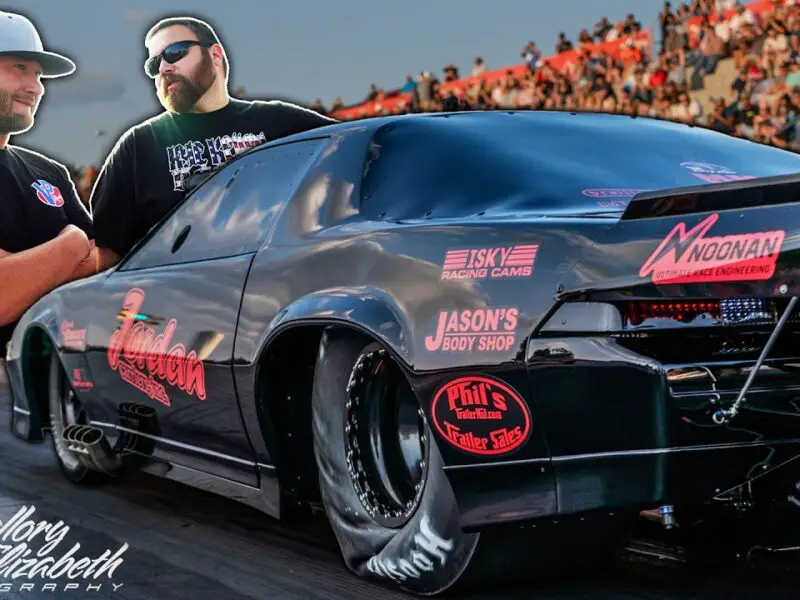Check this, Murder Nova Got Cheated on Street Outlaws!
In the high-octane world of street racing, every split second counts. The adrenaline-fueled races, captured in the hit show “Street Outlaws,” have once again ignited a fervent debate. The spotlight this time is on Sean, a skilled racer known as Murder Nova, who found himself at the center of a contentious dispute that has fans and experts alike scratching their heads.
In a recent episode, Sean faced off against Scott Taylor, a fellow racer with a reputation for speed and skill. The race seemed like business as usual until accusations of a “jump” emerged. The term “jump” refers to a racer initiating their run before the green light signals the start, giving them an unfair advantage.
However, the situation took an unexpected twist. The television coverage of the race left viewers craving clarity. The footage, rather than offering a conclusive view of the event, showed a shaky video captured by a phone camera. This lack of definitive evidence left the audience hungry for more.
Sean, keen to defend his integrity, took to the digital airwaves to voice his side of the story. His argument rested on a seemingly paradoxical occurrence – a simultaneous tire crack and green light. Sean reasoned that, according to the laws of physics, the speed of light is unbeatable. Therefore, the fact that both events occurred in the same frame suggested that the light must have been on before the tire cracked.
His argument echoed the essence of fairness, questioning whether a tire crack could truly precede the light, given the unyielding speed of light. Drawing on his understanding of physics, Sean contended that this was a clean race. It wasn’t merely a matter of street racing; it became a matter of science, a battle between the mechanics of tires and the cosmic constant of light speed.
The fervor of the discussion only escalated when Sean brought up an analogy from the world of sports. He likened the scenario to the infamous “tie goes to the runner” adage in baseball. Here, it was a tie between the light and the tire crack. And since nothing is swifter than light, Sean’s argument hinged on the assumption that the light was on before the tire gave way.
In his passionate explanation, Sean acknowledged the intricacies of camera technology and the apparent similarity of the moments. While conceding that on camera they might look the same, he underscored the unyielding truth of physics. The light’s speed trumps all else, rendering the simultaneous occurrence irrefutably in favor of the light being first.
His monologue was not just a defense of his reputation but a call for fairness, a demand for justice in the realm of speedsters. He pleaded for a re-run of the race, a chance for the truth to be unveiled in the bright light of fairness.
The debate rages on, dividing fans and armchair experts alike. Was it a jump or a fair race? The answer seems elusive, obscured by physics and camera angles. As enthusiasts of adrenaline-pumping races await a resolution, one thing is clear – the world of street racing has transcended the asphalt, weaving in science and philosophy into the very fabric of its drama. Whether Sean was truly cheated or not, one thing’s for sure – the controversy will keep the engines of conversation running hot.


